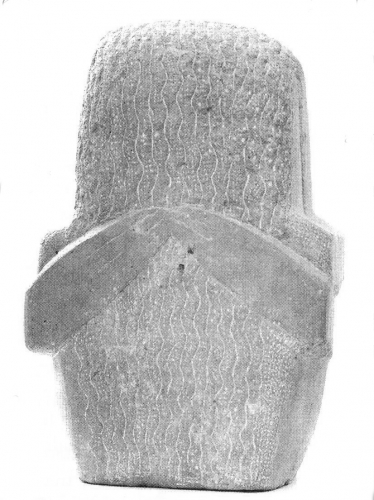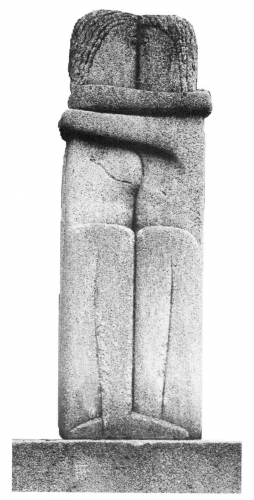At one time a certain woman was wearing a rough blanket. A certain monk, being infatuated, said to this woman, “Sister, is that thick, short hair yours?” She did not understand and said, “Yes, master, it is a rough blanket.” He was remorseful and said, “What if I have fallen into an offence entailing a formal meeting of the Order?” He told this matter to the Buddha, who said, “Monk, it is not an offense entailing a formal meeting of the Order, it is an offense of wrongdoing.”
Fast forward 2,540 years. I am sitting in a mandatory training session at the hospital where I work. Lawyers in dark suits and ties are talking us through handouts, lists of things we cannot do for fear of being sued. We are not to touch coworkers on the head, above the elbow or below the knee. Below the knee? I try to imagine how this could be done. Would I hide under a desk like the man in the movie The Piano, waiting to touch Holly Hunter’s leg through a run in her nylons? We protest. The “suits,” as my Gen X son calls them, tell us this rule was developed for shoe salesmen who grope women while fitting shoes. Oh.
Hugs are out. Even if someone’s father has just died? No hugs. Too easy to misinterpret. Misinterpret? We’re talking grief here. This is a hospital, right?
Next, lists of dangerous gifts. No intimate garments or anything that could be (mis)interpreted as romantic in intent, such as perfume or stockings. I get a little nervous. Those tights that didn’t fit, I gave to another lady doctor. What can we give each other? Not much. Even flowers are tricky, some falling into the romantic category (roses), some safe (daffodils). We protest. This is going too far.
We are warned that fairness does not matter, that everything on the three-page list has been the subject of a lawsuit. Examples of successful lawsuits for millions of dollars are described. We grow confused. Can we compliment a coworker on weight loss? A new tie? People take notes, adding forbidden acts and topics to the lists. Are we supposed to memorize the lists? Consult them before talking or touching?

In national companies, in dharma centers, and now in the White House, we have become a nation focused on the issue of sexual harassment. We are obsessed with the details of “what really happened.” If we can just get the “facts” right about what the President or an aide did or said, we can check what happened against the legal definition of sexual harassment. Then we will know if someone has done wrong or been wronged.
There are some fundamental problems here. First, we can never get the facts straight because our memories are simply memories: shaded, imprecise, serving the needs and defending the fears of the small self. Memories are not factual reality. The second problem is that we cannot teach or mandate appropriate behavior by making lists of discrete inappropriate behaviors. We cannot carry around lists to consult before speaking or acting. In the absence of overarching principles we remain confused, inconvenienced, and fearful.
When in doubt I turn to the words of the Buddha, the brightest, most sensible of human beings. Did the Buddha have anything to say about sexual harassment?
Yes. In the Vinaya. Wait, you say—Isn’t the Vinaya a moral code based on lists? Lists of acceptable and unacceptable behaviors? Yes and no.
The Vinaya records that many instances of what we would now call sexual harassment were brought to the Buddha for resolution. As is characteristic of the Vinaya, the questionable behavior, like the monk teasing the woman about her pubic hair, reoccurs in the texts in many different forms. Each instance is a bit of “case law” that makes the intent of the original precept clearer. Here are a few examples of lewd speech and behavior, almost identical with the kind of speech and action that are considered, today, to be at the least inappropriate, and indeed possible cause for an expensive lawsuit settlement.
“At one time a woman was wearing a newly dyed blanket. A certain monk said, “Sister, is that red thing yours?”
“At one time a certain woman said to a monk dependent on (her) family, “What, honored sir, may I give to the master?” “The highest gift, sister,” he said. “What is the highest gift, honored sir?” “Sexual intercourse,” he said. He was remorseful.
“At one time a certain woman was doing some work. A certain monk, infatuated, said, “Lie down, sister, I will work.” She did not understand. He was remorseful.
“If the monk, pointing out (any part) from below the collarbone to above the knee to the woman, speaks in praise, speaks in blame, begs, implores, exhorts and abuses, there is an offense of wrong doing.

Monks are not to speak words to women concerning genital organs, anuses, intercourse, or question women about experiences of intercourse. The rules apply to ordained women as well.
But if we look beyond the lists and careful definitions (which arose because of hundreds of cases that were brought before the Buddha or Elders in the sangha) to what the Buddha said in response to the cases brought before him, there are some clear overarching principles. In each case, the Buddha carefully considered the action according to five factors: object, perception, intention, effort, and result.
First: Was the object appropriate or not? In the case of a monk: did he touch a woman or not? In the case of a married man: did he touch his wife, or another woman?
The second factor involves clear perception of the object. Did the man perceive that what he touched was a live woman? As opposed to, say, a couch, a store mannequin, or a blow-up toy?
The third factor is intention. In the case of sexual misconduct, this means acting under the influence of lust. There is no penalty, for example, in the Vinaya for a monk who has a nocturnal emission. There is a penalty for a monk asking a woman to look at, hold, or touch his penis to bring about an emission.
Fourth, the effort involved is carefully investigated. Did the man or woman make arrangements to meet or to be alone with the other person? This is the factor of premeditation that is taken into account in Western codes of law, with manslaughter meriting a lesser penalty than calculated murder.
Finally, there is the result. In the Vinaya, a lighter penalty might be prescribed if the recipient of the censured action was unaffected by it.
To be sure, as humans with a short life span, we cannot know the long-term results of our actions. But recognizing that what we say and do can have repercussions for months, years, or eons, and that we cannot know the “final” outcome of something we think, do or say, Buddhism, like all other major religions, has developed a set of precepts.
There are five to sixteen general rules for lay people, hundreds of specific restrictions for the ordained. The precepts have been compared to dikes in a rice field. They hold back and channel the rushing water of our passions so that our life is not flooded, so that smaller and more helpless creatures are not harmed and the harvest of our life’s efforts is not ruined. These precepts prohibit those actions that have a bad outcome and cause harm to ourselves or others almost all—maybe 99.999%—of the time.
What about the remaining 0.001%?
We all want to be the exception, the one who can do something prohibited by the world’s religions for thousands of years, and not cause harm. Is there an exception? An advanced Zen koan asks this very question: “Is an enlightened person subject to cause and effect or not?”
The Dalai Lama was asked this question in a specific form: Was it ever possible for a Buddhist teacher to have sexual contact with a student and not cause harm? He pondered and then replied that the exception might be a person possessed of such clarity, one who had transcended the duality of attraction and aversion, that he or she could drink urine and eat feces.
Let’s look carefully at this answer. Such a person would be free from aversion, free from attachment, and free from the illusion of space and time. But he or she would not be free from cause and effect. If filet mignon, chocolate mousse, and fine wine reappear five minutes after consumption, what are they? Vomit. In a few hours? Urine and feces. The passage of time and the action of enzymes transforms the delicious into the repulsive—that’s cause and effect.
Attachment, which bounds us as subjects and binds us to the phenomenal world, prevents most of us from reducing vomit to the formula chocolate mousse + time. Freed of attachment, we would all be able to swallow vomit with the objectivity of a mathematician contemplating a piece of paper covered with sums. The Buddha himself was capable of recognizing a leper’s finger that fell into his begging bowl as nothing more than food + time. He ate it with equanimity. Such a rare and wise person might be able to break a basic precept with a good outcome. But the Buddha did not.

Considered on this level, it becomes clear that the true remedy for sexual or any other kinds of harassment will never be legal. It has to be spiritual. The solution lies in the vivid experience of the interdependence of all existence. From this arises a dynamic and deep awareness of the reactions of “the other” to what we do, say, and think.
Until we have the clarity of the Enlightened One we do need legal and moral definitions of what behaviors are unwholesome—that is, those that will have a bad outcome for us or the Whole. As the Vinaya testifies, such “dikes” were as necessary in the Buddha’s monastery five hundred years before Christ as they are today, in hospitals, spiritual centers, and houses, White or any other color.
But our civil society is more divided in its identities and riven by conflict than Shakyamuni’s community of monks ever was. Nor can we count on having our laws administered by judges as enlightened as the Buddha himself. And ultimately, even if we could, the reliance we have developed on some sort of objective code to sort out our differences is an illusion.
For—just as with that pilot group of Indian monks, twenty-five hundred years ago—the real work has to be done by reaching beyond our bounded selves and awakening to our interdependence.
As a simple opening move, it can help to release the loaded words victim and offender. This does not mean we should discard the labels entirely. Victims require protection and offenders need to be held accountable and make reparation. But only in the quiet, nonreactive mind of no-labels can we step back from a viewpoint centered in a particular self and be more objective about action and reaction, karma and its fruits.
A true awakening would expand this awareness of those impacted by our thought, speech, and bodily action to include not only other people, but all beings we recognize as living—plants, animals, fungi and bacteria—and even those existences we consider nonliving—rocks, water, and sunlight. Out of this huge awareness we would become as responsible for the welfare of others as for ourselves. Maybe more.
Thank you for subscribing to Tricycle! As a nonprofit, we depend on readers like you to keep Buddhist teachings and practices widely available.